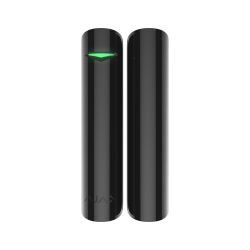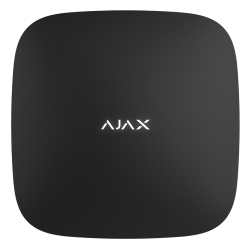Client
Copenhagen Municipality
Partner: Kemp & Lauritzen
We are used to museum exhibits being covered with glass and protected with other physical barriers, but not this time. We’ll tell you how Ajax ensured free access to football memorabilia without compromising security.
In 2021, Denmark hosted the European Football Championship matches for the first time in its history. To celebrate the feast of football, UEFA, together with the Danish Football Association and with the support of Copenhagen Municipality, initiated a thematic exhibition, The History of the European Football Championship, in the Museum of Copenhagen. The exhibition also marked the 60th anniversary of the Championship and ran from June 12 to July 9.
The main memorabilia presented at the exhibition were the uniforms of famous football players: Michel Platini, Gary Lineker, Eric Cantona, Frank Rijkaard, Michael Laudrup, and many others. There was even an exhibit displaying a plaster cast of the leg of Danish player Henrik Andersen. He broke his leg in the semi-final against the Netherlands during EURO 1992. And in the final that same year, Denmark beat Germany 2-0 and won the European Championship trophy. The Cup became the centerpiece of the exhibition.
The exhibition was held at the Museum of Copenhagen. The museum is located in the City Hall in the historical part of the city, where there are always many tourists.

Challenge
To provide open access to exhibits for a large number of visitors
A unique exhibition requires nonstandard conditions that must be considered when choosing the security system.
Open access to the exhibits. The exhibits are not fenced to block visitors; you can come as close as you want to see all the details. This supports the spirit of unity, safety, and respect that accompanies the feast of football.
A large flow of visitors. The exhibition took place in Copenhagen City Hall. It is a tourist hotspot, especially during the Сhampionship. Admission was free; every guest and resident of the city could visit the exhibition.
Hence, detectors were not supposed to attract too much attention. At the same time, exhibit security had to be at the highest level with zero chance of theft or sabotage. It is also important to prevent false alarms in conditions of free access to the exhibits. And, of course, the museum’s security service should receive instant notifications at any hint of theft.
The exhibition was temporary, so it needed a reliable yet flexible solution that could be quickly installed and removed. Installers did not have weeks to prepare as everything had to be done in just a few days.
All these factors created nonstandard conditions to find a solution.
“Ajax was chosen because Kemp & Lauritzen saw the app functionality and the ability of Ajax wireless devices to handle the challenge.Also, we needed a temporary solution, and Ajax was the only professional system that could deal with such specifics”
Why Ajax
Ajax meets the key requirements of the project:
- Reliability. Stable radio communication and no false alarms are important under conditions of free access to the exhibits.
- Flexibility. There are no wires, so the exhibits can be moved as needed, and it took only a few days to install everything.
- Convenient notifications. Every museum guard installed the Ajax app to receive instant notifications on their smartphone.
Solution
Wireless detectors notifying on vibration and tilt angle change
There were various exhibits: football shirts, boots, a plaster cast of the leg, and the EURO 1992 trophy.
DoorProtect Plus was used to protect every exhibit. It’s a wireless opening, tilt, and shock detector. As a rule, such detectors are installed on doors and windows, but the museum used them differently.
To protect football jerseys, DoorProtect Plus detectors were screwed on the mannequins to make sure the devices wouldn’t fall or trigger false alarms. Not a single false alarm happened during a month.
In the settings, the shock and tilt detection function was enabled. If anyone pulled a T-shirt or tilted a mannequin, as well as in case of any tangible vibration, the museum guards would have received an instant notification.

The same principles were applied to the rest of the exhibits, except that DoorProtect Plus detectors were secured with double-sided tape. Technically, visitors could gently touch the exhibits but not move them. If someone moved, for example, a shoe or the plaster leg, the security guards would immediately receive an alert and see which exhibit was in danger.
To protect the plaster cast of Henrik Andersen’s leg, the detector was installed inside the exhibit.
The detectors are wireless, so if needed, the exhibition organizers and the security service could easily change the location of the exhibits. When the security system is disarmed, of course.
The European Championship trophy was the only exhibit in the glass cube. The Cup was protected with two DoorProtect Plus detectors — one was located inside the Cup, and the other was in its lower part. Two more DoorProtect Plus detectors were protecting the pedestal. Any suspicious vibration would trigger an alarm.

DoorProtect Plus detectors work in the Ajax system via the Jeweller radio protocol, which provides communication with the hub at a distance of up to 1,200 meters. This is more than enough for stable communication within 50 by 50 meters of the exhibition hall. And to protect data, the protocol uses block encryption with a key. In case of jamming, the system switches to the backup frequency. At the same time, the hub sends a notification to the guards and raises the alarm.
The operation of DoorProtect Plus was supported by the Hub 2 Plus control panel that provides stable communication and controls up to 200 security devices. This was enough because the museum used 45 DoorProtect Plus for this project.
The hub is managed via Ajax apps. With the app, you can change the settings of the hub and connected devices, receive notifications, and configure automation scenarios.
The installer configured the system in the Ajax PRO: Tool for Engineers mobile app, and the museum guards used the Ajax Security System app on their smartphones to receive notifications and change the security mode. In case of alarm, the app shows which detector has been triggered.
The security service used the Ajax system together with the stationary security system of the Museum of Copenhagen.
It took three days to install and configure Ajax devices, fast and hassle-free. One installer did everything thoroughly and without any fuss.

“At Kemp & Lauritzen, we were proud to work on this project. The Ajax functionality and stability have inspired us to look more into these solutions, and new installations have already been made in other museums and exhibitions. There are new projects in the pipeline”






